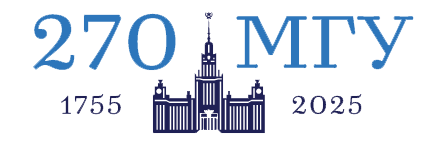You are here
Research Laboratory of Computational Modeling Tools
Head of the laboratory: Berezin Sergey, Associate Professor, PhD.
Regular courses:
- Computer Graphics by Assoc. Prof. Sergey Berezin, 32 lecture hours, 5th semester;
- Object-oriented programming on .NET platform by Assoc. Prof. Sergey Berezin, 64 lecture and 64 seminar hours, 7th and 8th semesters.
Main Scientific directions
Our goal is to provide researchers from many branches of science, education and industry with innovative tools and methods for solving applied problems using the latest information technologies, modern methods of computation modeling and scientific visualization. We are actively collaborating with research and engineering teams from Microsoft Research in Cambridge, UK and Redmond, USA and use latest Microsoft tools and technologies as a foundation for our tools and products. The second informal title of CMT laboratory is “Student Laboratory of Microsoft Technologies”. During last two year the collaboration with Russian Rocket and Space Corporation “Energia” has started in the field of advanced visualization of space flights.
FetchClimate project (http://research.microsoft.com/en-us/projects/fetchclimate/default.aspx)
This project provides scientists with aggregated values of climate parameters that are extracted on the fly from several datasets of different origins and structure. FetchClimate is deployed as a Windows Azure cloud service. All climate datasets are stored in the cloud as well. Special feature of the FetchClimate is an automated choice of datasets that suit best for each particular request. The data source is chosen by estimating uncertainty of the results. Another unique feature of the service is an ability to provide the estimated uncertainty for the result. The uncertainty can be used in further uncertainty estimation of a computational model that uses FetchClimate. It is possible to access the FetchClimate service programmatically or from any modern web browser.
All work and research on FetchClimate project is carried out under a close collaboration with Vassily Lyutsarev (MSR Cambridge) and Drew Purves (MSR Cambridge) from the Computational Ecology and Environmental Sciences group of MSR Cambridge. The project was supported by Microsoft Research Connections.
ChronoZoom project (http://www.chronozoomproject.org)
This project is a novel browser-based application that visualizes entire Big History from the Big Bang to nowadays. ChronoZoom uses HTML5 family of technologies to combine text, graphics, video and audio information on single graphical canvas than could be zoomed in and out from billions of years to single day in the history of humanity. Backing store for ChronoZoom is located in Windows Azure cloud environment. We believe that ChronoZoom project carries a great educational potential and is a good example how modern information technologies and humanitarian sciences can be integrated.
ChronoZoom is being jointly developed by Moscow State University, University of Berkeley, Microsoft Research Redmond and Outercurve Foundation.
Scientific DataSet (http://sds.codeplex.com) and DynamicDataDisplay (http://dynamicdatadisplay.codeplex.com)
These two projects form a set of libraries and tools that help domain scientists to read, transform, write and visualize multidimensional data sets.
Scientific DataSet allows scientists to access data everywhere regardless a type of data source and should be easily integrated in a data-oriented application. The very important issue is to enable transparent data access located in Cloud and thus simplify Cloud applications developing. Also the approach can become a foundation for dynamic dataflows which is a promising way to create complex distributes and interactive data-oriented applications; for example, creating multi-scale modeling application by coupling of separate simpler applications.
DynamicDataDisplay is designed to be a lightweight but powerful class library that is able to interactively display millions of data points without imposing restrictions on input data. The desktop version of DynamicDataDisplay makes use of DirectX 11 and modern graphics hardware to provide a high performance rendering. DynamicDataDisplay for Silverlight uses special techniques such as the progressive rendering to retain interactivity even for large data sets. Supported visualizations include line and marker graph, heatmaps, contour lines. DynamicDataDisplay is used in DataSet Viewer tool from Scientific DataSet.
Space flight visualizations – a visualization of the International Space Station, “Soyuz” and “Progress” spaceship maneuvers and launches of “Soyuz” and “Proton” carriers. The visualization software supports both the real-time telemetry and simulation mode with rich visual effects such as self-shadowing and light scattering in the Earth’s atmosphere. An experimental version with stereo-rendering is implemented and was demonstrated in Multimedia Auditorium P-13.



